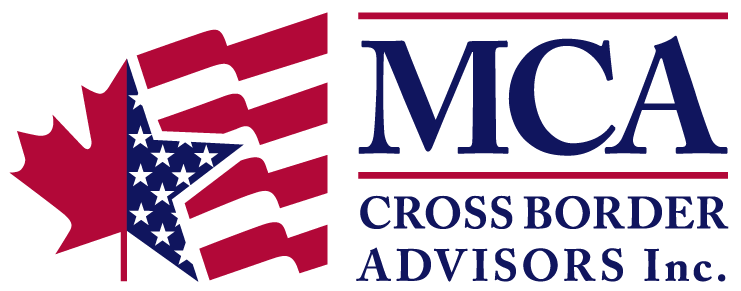Tariffs, Trade Tensions, and the Impact on Investors: What You Need to Know:
Tariffs, Trade Tensions, and the Impact on Investors: What You Need to Know:
As a cross-border advisory firm serving both Canadian and American clients, we’ve been receiving a lot of questions around Trump’s proposed tariffs on Canada, Mexico, and China and what it all may mean for investors. While the full effects remain uncertain, there are several key areas where these tariffs could have significant economic implications. Let’s dig in.
Economy Broadly
One of the most immediate concerns is rising consumer prices. Tariffs typically increase costs for imported goods, which may result in higher prices for both U.S. and Canadian consumers. Products like cars and electronics, which rely heavily on imported components, could see particularly notable price hikes, putting pressure on household budgets and overall consumer spending.
Another major impact is supply chain disruptions. Many businesses depend on integrated supply chains across North America and China, and the new tariffs could create logistical challenges, delays, and increased operational costs as companies adjust to shifting trade policies. This could weigh on corporate earnings, especially for industries reliant on cross-border manufacturing and just-in-time inventory systems.
Finally, the tariffs have escalated concerns over international relations, pushing discussions of retaliatory measures from Canada, Mexico, and China. If trade tensions continue to rise, the possibility of a broader trade war could put additional strain on global markets and economic stability. Investors should closely monitor these developments, as uncertainty surrounding trade policies could lead to increased market volatility in both equity and fixed-income markets.
Let’s dig in a bit deeper.
Equity Markets
The equity markets’ reaction to Trump’s proposed tariffs on Canada, Mexico, and China in 2025 will depend on several key factors, including corporate earnings, consumer prices, and investor sentiment. Stocks could experience short-term volatility as investors assess the potential economic impact of tariffs. If tariffs lead to escalating trade tensions or retaliation from Canada, Mexico, and China, markets may see a sell-off in risk assets as uncertainty increases.
Certain sectors will likely feel the impact more than others. Industrials and manufacturing companies that rely on supply chains across North America and China—such as auto manufacturers, machinery producers, and aerospace firms—could face higher costs, pressuring profit margins. Technology firms, which depend on components from China and Mexico, may face disrupted supply chains and rising production costs, potentially weighing on stock prices. In the consumer discretionary sector, higher import costs could drive up prices for goods like electronics, clothing, and automobiles, reducing consumer spending power and hurting retailers and automakers. The energy and commodities sector could also be affected, particularly if Canada, China, or Mexico retaliate with tariffs on U.S. energy exports like crude oil or natural gas. That to say, some commodity producers could benefit if trade barriers create supply disruptions.
Inflation and Federal Reserve policy will also play a critical role. Tariffs could increase inflation as businesses pass higher costs onto consumers. If inflation rises sharply, the Federal Reserve may respond by raising interest rates, which could weigh on stock valuations, particularly in rate-sensitive sectors like tech and real estate. However, if the Fed prioritizes economic growth over inflation control, it may keep rates steady, which could help sustain equity market momentum.
Corporate earnings and market sentiment will be heavily influenced by how companies adapt. Those with domestic supply chains and strong pricing power may outperform, while firms heavily reliant on imports could see earnings pressure. If American businesses respond by reshoring production to the U.S., there could be increased investment in U.S. manufacturing, benefiting certain sectors like industrials and materials. The magnitude of investor reaction will depend on whether tariffs lead to full-scale trade disputes or if negotiations result in softer trade restrictions.
Investors may also rotate into defensive sectors such as healthcare, utilities, and consumer staples, which tend to be more resilient during economic slowdowns. Dividend-paying stocks and companies with stable earnings may see increased interest as investors seek safety.
Bond Market Impacts
The bond market’s reaction to tariffs will depend on inflation expectations, central bank policy, and investor sentiment. In both the U.S. and Canada, trade tensions could introduce volatility into fixed-income markets, influencing yields and monetary policy decisions.
In the short term, heightened uncertainty could lead to a risk-off sentiment, driving investors toward safe-haven assets like U.S. Treasuries and Canadian government bonds. This increased demand could push yields lower despite inflationary pressures. However, if tariffs lead to sustained inflation, central banks may be forced to respond.
In the U.S., the Federal Reserve may adopt a more hawkish stance by raising interest rates to combat rising prices. Higher rates would typically lead to lower bond prices, as newer bonds with more attractive yields enter the market. Similarly, the Bank of Canada could face pressure to adjust its monetary policy if inflation accelerates. However, Canada’s economy is more trade-dependent, meaning that prolonged economic uncertainty could lead to a more cautious approach from the BoC.
The yield curve will be a critical indicator of market sentiment. A flattening yield curve could emerge if investors expect slower economic growth due to trade disruptions, causing long-term bond yields to decline while short-term yields remain elevated. Conversely, if inflation fears dominate and central banks raise rates aggressively, the curve could steepen as long-term yields rise.
Corporate and high-yield bonds in both countries may also face challenges. Companies reliant on international supply chains, particularly in manufacturing and retail, could see higher costs, potentially widening corporate bond spreads. High-yield (junk) bonds might experience increased volatility, especially for firms with weaker balance sheets that could struggle with rising expenses.
Foreign investment in North American bonds could also shift due to escalating trade tensions. If China or other trade partners reduce their purchases of U.S. Treasuries or Canadian government bonds, yields may rise. However, if global economic uncertainty intensifies, both U.S. and Canadian bonds could continue attracting inflows as relatively safer assets.
Ultimately, investors should closely monitor inflation trends, central bank decisions, and broader economic conditions, as these factors will shape bond market movements in both the U.S. and Canada.
What Does It All Mean for Investors?
At a high level, tariff-related developments could shake up financial markets, so investors should be prepared for some turbulence ahead. Trade tensions often create uncertainty, which typically leads to short-term volatility. While U.S. markets are likely to be directly impacted, the Canadian equity market could also feel significant effects, especially given the close trade ties between the two countries.
Certain industries are more likely to feel the impact than others. Companies that rely heavily on imports—such as automakers, electronics brands, and retailers—could face higher costs, which may squeeze profit margins. If businesses pass those costs onto consumers, prices at stores on both sides of the border could increase. This, in turn, may influence interest rate decisions in both the U.S. and Canada, which could affect equities and broader market sentiment.
On the flip side, certain sectors may hold up better. Companies that operate primarily within the U.S. or have strong pricing power—such as those in healthcare, utilities, and consumer staples—could prove more resilient. Likewise, Canadian companies focused on domestic markets or with limited exposure to global supply chain disruptions might fare better, as could those in energy and natural resources if tariffs disrupt global trade flows.
So, what should everyday investors do? Stay calm, stay diversified, and focus on high-quality investments. Trying to time the market during periods of uncertainty is often a losing game, but holding onto financially strong companies can help weather the ups and downs. Keeping an eye on inflation and interest rates in both the U.S. and Canada will be crucial in the months ahead. For long-term investors, patience and a well-balanced strategy—remain the best approach in our view. Should you wish to discuss your cross-border investment strategy, please reach out to request a consultation.

MCA Cross Border Advisors, Inc. is a registered investment adviser. Information presented is for educational purposes only and does not intend to make an offer or solicitation for the sale or purchase of any specific securities, investments, or investment strategies. The content of this presentation is for information purposes only and should not be construed as investment or financial advice. Investments involve risk and, unless otherwise stated, are not guaranteed. Be sure to first consult with a qualified financial adviser and/or tax professional before implementing any strategy discussed herein. Past performance is not indicative of future performance.
